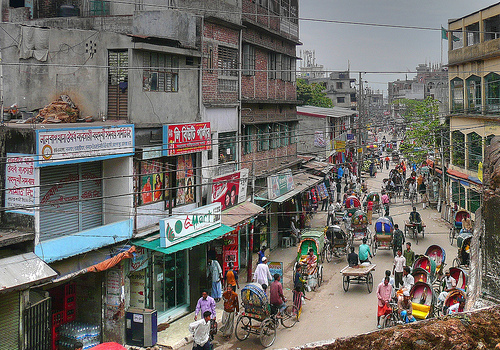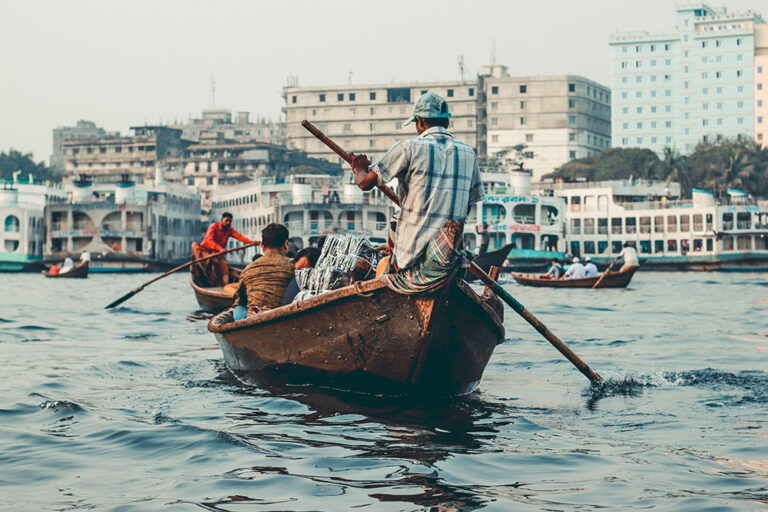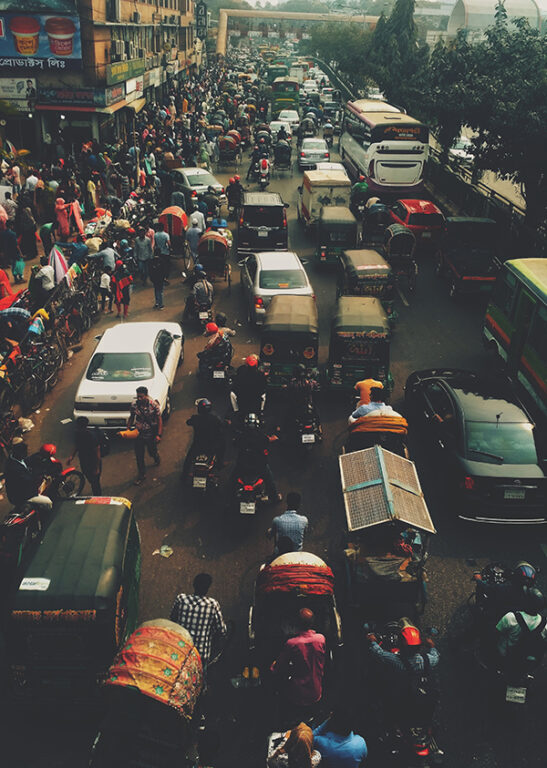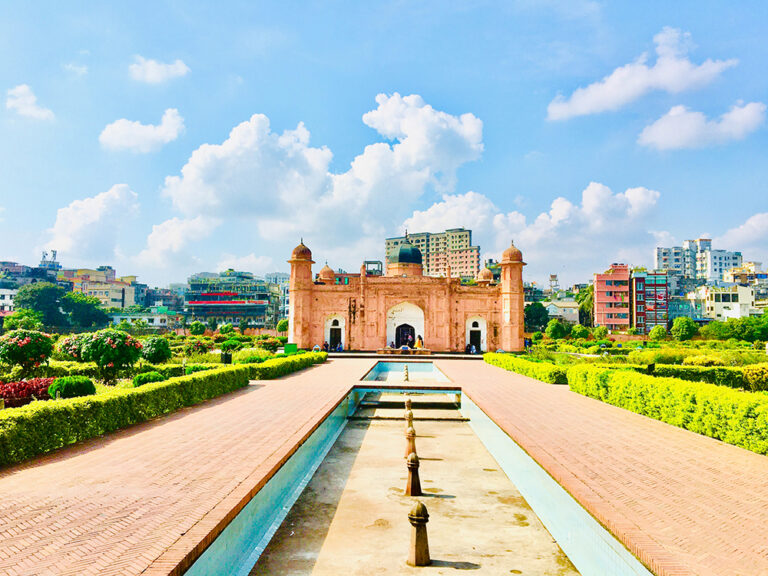Dhaka: Largest City in Bangladesh
Bangladesh is a country rich in culture, history, and natural beauty. Within this vibrant nation lies its largest city, Dhaka. With a population of over 21 million people, Dhaka is not only the capital city but also the economic and cultural hub of Bangladesh. Let’s take a closer look at this bustling metropolis that has evolved from a small fishing village to become the largest city in Bangladesh.
Dhaka: Bangladesh’s Capital and Largest City

Dhaka holds a special place in the hearts of all Bangladeshis. Known for its vibrant street markets, magnificent historical sites, and bustling riverways, this city has a charm like no other. Located on the banks of the Buriganga River, Dhaka is often referred to as the “City of Mosques” for its numerous beautiful mosques scattered throughout its neighborhoods.
One of the most famous landmarks in Dhaka is the National Parliament House, also known as Jatiya Sangsad Bhaban. Designed by world-renowned architect Louis I. Kahn, this majestic building has become an icon of modern architecture. The Shaheed Minar, a solemn monument commemorating the language movement martyrs, is another significant symbol of Dhaka’s resilience and determination.
When exploring Dhaka, visitors are greeted with a kaleidoscope of colors, sounds, and scents. The city’s vibrant street markets, such as New Market and Shankhari Bazaar, are a paradise for shopaholics. Here, one can find a wide array of traditional handicrafts, textiles, and spices. The bustling atmosphere, filled with the shouts of vendors and the bargaining banter of customers, creates an unforgettable experience.
For history enthusiasts, Dhaka offers a treasure trove of magnificent historical sites. The Lalbagh Fort, built in the 17th century, stands as a testament to the city’s rich Mughal heritage. Its intricately designed gateways, beautiful gardens, and the mausoleum of Pari Bibi, the daughter of Mughal governor Shaista Khan, transport visitors back in time. Another must-visit site is the Ahsan Manzil, also known as the Pink Palace. This grand palace-turned-museum showcases the opulent lifestyle of the Nawabs of Dhaka during the British colonial era.
As the sun sets over the city, the Buriganga River comes alive with activity. Traditional wooden boats, known as “dugout canoes,” glide through the water, carrying passengers and goods. The Sadarghat River Port, one of the largest river ports in the world, buzzes with energy as people embark on their journeys or simply enjoy the view. A boat ride along the river offers a unique perspective of Dhaka’s skyline, with its mix of modern high-rises and traditional architecture.
While Dhaka is known for its mosques, it is also home to a diverse range of religious sites. The Armenian Church, built in 1781, stands as a testament to the city’s multicultural past. Its stunning architecture and serene atmosphere provide a peaceful retreat from the bustling streets. The Dhakeshwari Temple, dedicated to the Hindu goddess Dhakeshwari, is another important religious landmark. Believed to be over a thousand years old, this temple attracts devotees from all over the country.
In conclusion, Dhaka is a city that captivates visitors with its rich history, vibrant culture, and warm hospitality. From its bustling street markets to its magnificent historical sites, there is always something new to discover in this enchanting city. Whether you are exploring its mosques, immersing yourself in its colorful markets, or cruising along the Buriganga River, Dhaka promises an unforgettable experience that will leave a lasting impression.
An Overview of Dhaka: Bangladesh’s Largest City
Dhaka is not just a city; it is an embodiment of contradictions and complexities. While skyscrapers and modern high-rises dot the landscape, traditional rickshaws still navigate the narrow alleys and bustling streets. The city’s rich history can be seen in its numerous historical sites, such as Lalbagh Fort, Ahsan Manzil, and the Armenian Church.
Moreover, Dhaka offers a diverse culinary experience. From mouthwatering street food to exquisite fine dining, food lovers can find a wide variety of flavors to satisfy their taste buds. The city’s bustling markets, such as New Market and Gausia Market, offer a unique shopping experience where one can find everything from traditional clothing to handmade crafts.
Exploring Dhaka’s historical sites is like stepping back in time. Lalbagh Fort, built in the 17th century, stands as a testament to the city’s Mughal heritage. Its intricate architecture and beautiful gardens provide a serene escape from the hustle and bustle of the city. Ahsan Manzil, also known as the Pink Palace, was once the residence of the Nawabs of Dhaka. Today, it serves as a museum, showcasing the opulent lifestyle of the bygone era.
The Armenian Church, located in the old part of Dhaka, is a hidden gem that reflects the city’s multicultural history. Built in 1781, it is one of the oldest churches in Bangladesh and stands as a symbol of religious harmony. Its stunning architecture and peaceful atmosphere make it a must-visit for history enthusiasts and architecture lovers.
When it comes to food, Dhaka has something for everyone. The city is famous for its street food culture, where vendors serve up delicious delicacies like jhalmuri (spicy puffed rice), fuchka (crispy hollow shells filled with spicy potato mixture), and kacchi biryani (fragrant rice and meat dish). For those seeking a more upscale dining experience, Dhaka boasts a range of fine dining restaurants offering international cuisines as well as traditional Bengali dishes.
Shopping in Dhaka is an adventure in itself. The city’s bustling markets are a treasure trove of unique finds. New Market, also known as Hossaini Dalan, is a popular shopping destination where you can find everything from clothing and accessories to electronics and household items. Gausia Market, on the other hand, is famous for its textile shops, offering a wide range of fabrics and traditional garments. Exploring these markets is not just about shopping but also immersing oneself in the vibrant atmosphere and experiencing the local culture.
Overall, Dhaka is a city that seamlessly blends the old and the new, the traditional and the modern. Its rich history, diverse culinary scene, and vibrant markets make it a destination worth exploring. Whether you are a history buff, a food lover, or a shopaholic, Dhaka has something to offer for everyone.
The History of Dhaka: From Fishing Village to Largest City in Bangladesh

The history of Dhaka dates back over a thousand years. Originally a trading and fishing village, Dhaka gradually grew in importance under the rule of the Sultanate of Bengal and the Mughal Empire. The village was strategically located on the banks of the Buriganga River, which facilitated trade and commerce with neighboring regions.
During the Mughal period, Dhaka became a center of cultural and intellectual activity. The city attracted scholars, poets, and artists, who contributed to its rich heritage. The Mughal rulers constructed magnificent buildings, such as the Lalbagh Fort and the Ahsan Manzil, which still stand as reminders of Dhaka’s glorious past.
With the arrival of the British in the 18th century, Dhaka underwent significant changes. It became a major administrative center and the capital of Bengal Presidency. The British developed the city’s infrastructure, introducing modern amenities such as roads, railways, and electricity. Dhaka’s population grew as people from different parts of the region migrated to the city in search of better opportunities.
After gaining independence in 1971, Dhaka emerged as the capital of Bangladesh. The city experienced rapid urbanization and population growth. The government implemented various development projects to accommodate the increasing number of residents. However, this rapid growth also posed challenges for the city.
One of the major challenges faced by Dhaka is overcrowding. The city’s population has skyrocketed, leading to increased demand for housing, healthcare, and other essential services. As a result, slums and informal settlements have emerged in various parts of the city, exacerbating issues of poverty and inequality.
Traffic congestion is another pressing issue in Dhaka. The city’s roads were not designed to handle the current volume of vehicles, resulting in daily gridlocks. The government has implemented several measures to address this problem, including the construction of flyovers and the introduction of mass transit systems. However, the issue persists, causing frustration for residents and hindering economic activities.

Despite these challenges, Dhaka has thrived and transformed into an economic powerhouse. The city is now a major hub for industries such as textiles, garments, and pharmaceuticals. It attracts both domestic and foreign investments, contributing significantly to the country’s economy.
Dhaka is also renowned for its educational institutions and cultural heritage. The city is home to prestigious universities, research centers, and libraries. It has a vibrant arts and music scene, with numerous theaters, art galleries, and music festivals. Dhaka’s rich cultural heritage is celebrated through various events and festivals, showcasing the diversity and creativity of its people.
In conclusion, the history of Dhaka is a testament to its resilience and adaptability. From its humble beginnings as a fishing village, the city has grown into a bustling metropolis. It has faced numerous challenges along the way but has emerged as a vibrant center of commerce, education, and culture. Dhaka continues to evolve, embracing modernity while preserving its rich heritage.
A Tour of Dhaka: Discovering Bangladesh’s Biggest City
Exploring Dhaka can be a captivating experience. Start your tour by visiting the historic Old Dhaka, where narrow alleys and centuries-old buildings transport you back in time. Take a ride on a traditional rickshaw and witness the vibrant street life that characterizes this part of the city.

For those seeking a taste of modern Dhaka, head to the upscale neighborhoods of Gulshan and Banani. Here, you will find luxurious shopping malls, international restaurants, and trendy cafes. The Hatirjheel Lake, a man-made lake surrounded by beautifully landscaped gardens, is a serene retreat in the heart of the city.
No visit to Dhaka is complete without indulging in its mouthwatering culinary delights. From the spicy flavors of biryani to the delectable desserts like roshogolla and mishti doi, Dhaka’s food scene is a gastronomic adventure waiting to be explored.
In conclusion, Dhaka, the largest city in Bangladesh, offers a captivating blend of history, culture, and modernity. From its stunning architecture and bustling markets to its mouthwatering cuisine and warm hospitality, this city has something to offer every traveler. Whether you are an avid history enthusiast, a food lover, or a cultural explorer, a visit to Dhaka is sure to leave you with lasting memories and a deeper understanding of Bangladesh’s vibrant spirit.
